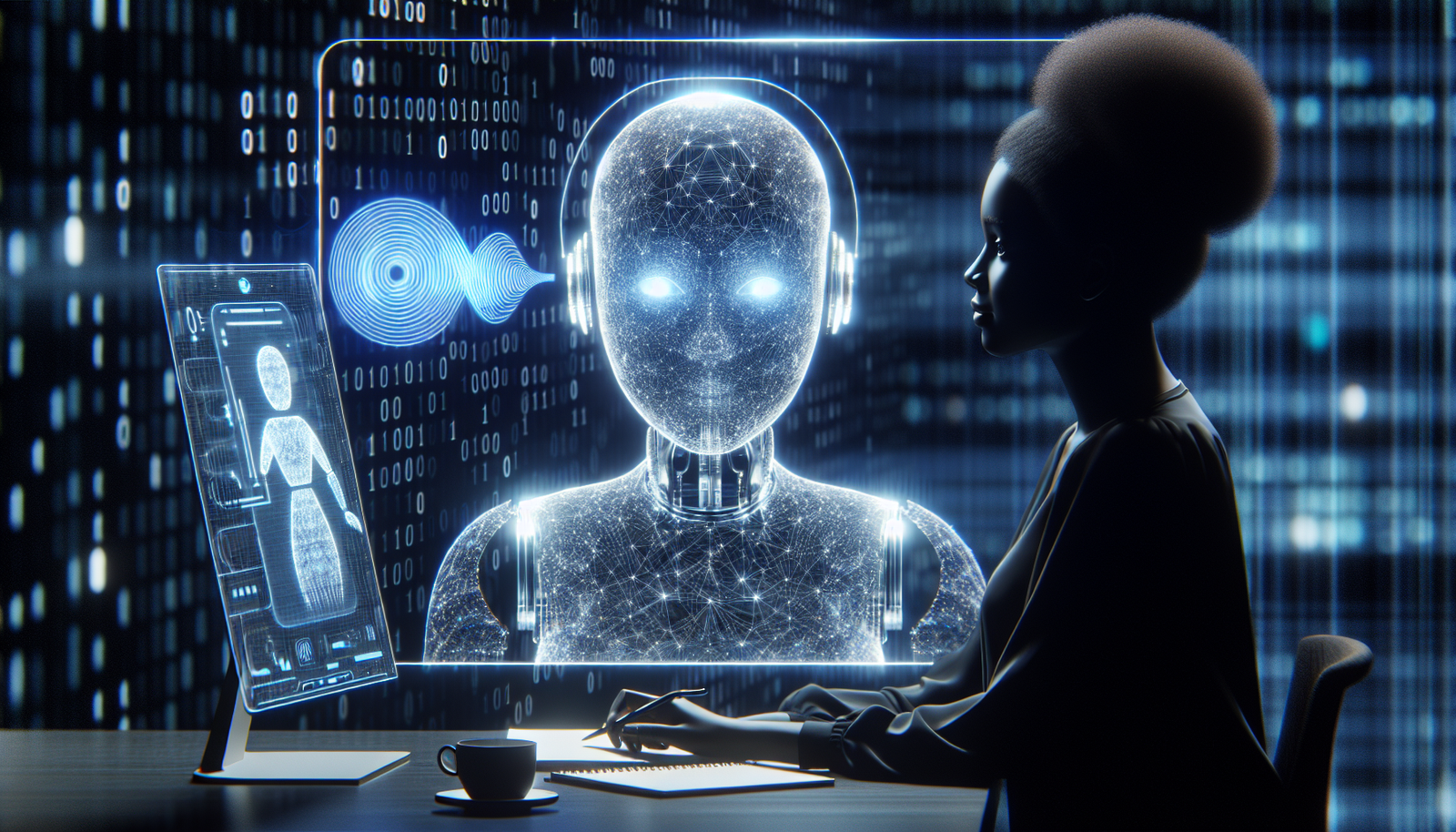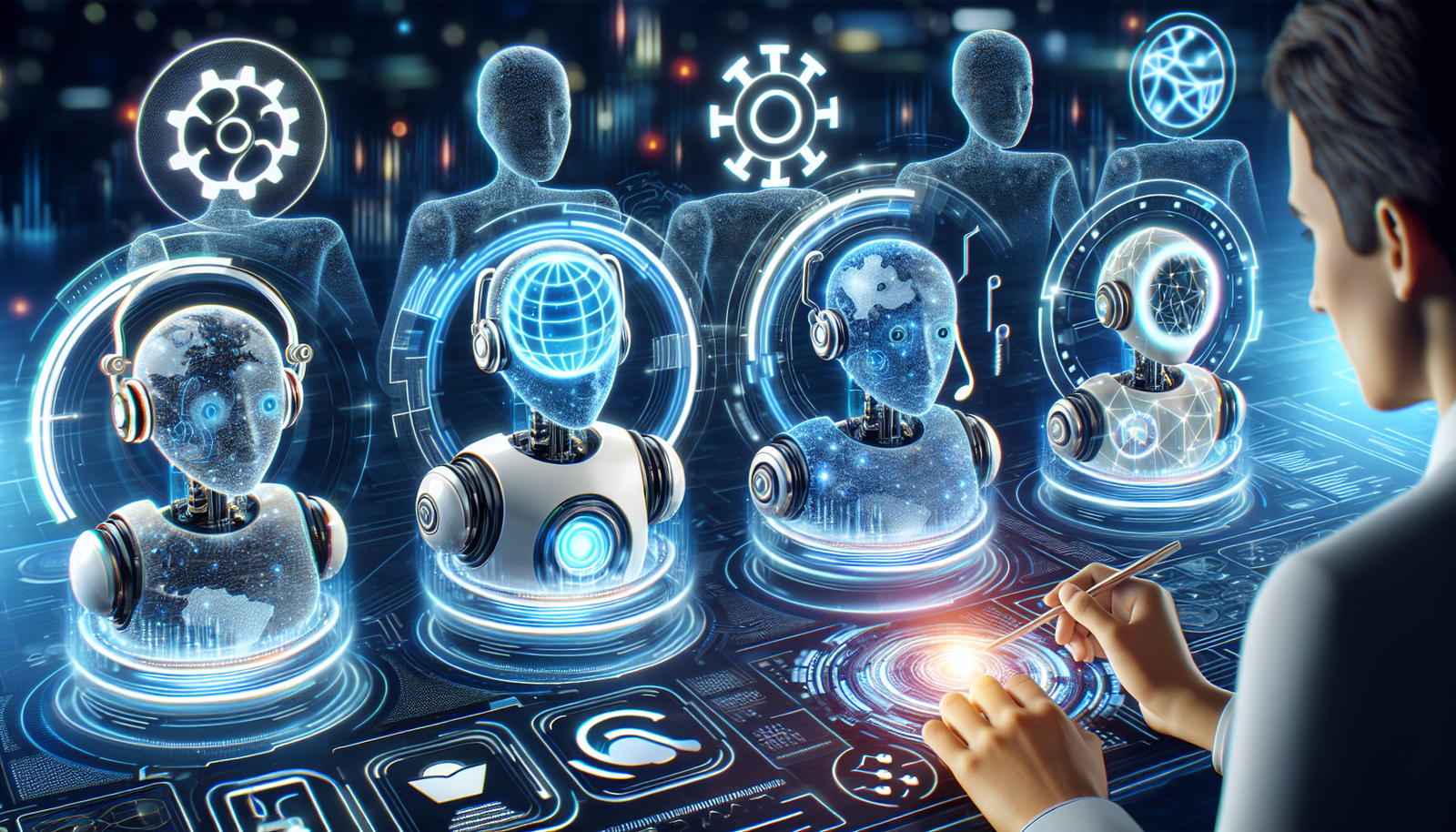
An Introduction to AI Chatbots: Your Essential Guide to Smart Conversations
What are AI chatbots, and how are they transforming conversations with technology? An introduction to AI chatbots provides a succinct overview of their ability to mimic human interactions, smartly apply themselves to enhancing customer experiences, and learn through advanced language processing technology. As you delve into the article, expect to understand the essence of AI chatbots, discover their applications, and gain awareness of the intricacies that enable their functionality.
Key Takeaways
- AI chatbots deliver personalized, human-like interactions using Natural Language Processing (NLP) and machine learning, with the ability to understand user intent and learn from each interaction for continuous improvement.
- Chatbots have evolved from rule-based systems to AI-driven models that can engage in dynamic conversations, handle multiple languages, and integrate with business ecosystems for enhanced customer service and operational efficiency.
- The future of AI chatbots includes the development of multimodal systems and the potential to significantly impact customer satisfaction by providing personalized support and generating valuable customer insights.
Exploring the World of AI Chatbots

AI chatbots, also known as artificial intelligence chatbots or AI-based chatbots, are software programs that aim to imitate human conversations. They utilize Natural Language Processing (NLP) technology to understand and interpret human language to engage in dynamic dialogues independently. This enables them to provide personalized and interactive services similar to a real conversation, making the user experience more engaging thanks to AI-driven chatbots.
The role of AI bots goes beyond just simple interactions. Many businesses have implemented them globally for improved customer service experiences, increased brand recognition, and instant assistance without requiring any human intervention. The success of these artificial intelligence-based chatbots largely depends on their ability to identify user intentions accurately.
The Evolution from Rule-Based to AI-Driven Bots
Chatbots have evolved significantly, from rule-based systems to more advanced AI-driven models. Rule-based chatbots function based on predefined commands and can efficiently handle simple inquiries with precision. Their rigidity and need for precise instructions limit them in addressing complex queries where understanding behavioral patterns becomes essential for the success of AI-driven models.
This is where artificial intelligence (AI) comes into play – by utilizing machine learning algorithms. These sophisticated chatbots can comprehend customer intent effectively. With time, they continue improving their interactions as they learn from each conversation by generating responses tailored to specific contexts. As a result of this adaptability and progressive enhancement process driven by machine learning technology underpinning it all – user experience gets enhanced further.
The transition seen nowadays with contextual bots supersedes pure rules-based approaches since it integrates context awareness capabilities within its operations paradigm compared to traditional methods that require adherence to pre-programmed command structures before fulfilling requests. Leveraging AI technologies like deep neural networks or NLP techniques embedded inside them makes possible intuitive interpretation of customers’ intents & much better handling challenging scenarios surpassing both requirements complexity Alongside explaining motivations behind actions supporting decision processes ultimately leading even more effective course interventions fulfilled regarding higher-end results.
The Inner Workings of an AI Chatbot

AI chatbots combine technology and human intelligence by utilizing sentiment analysis, natural language processing (NLP), and machine learning to interpret user intentions and emotions. This allows for a personalized and interactive experience for the user. The core components of AI chatbots include understanding NLP, implementing machine learning techniques, and efficiently using data while respecting privacy concerns. These elements work together to power the functionality of these advanced conversation agents known as chatbots.
Understanding Natural Language Processing (NLP)
Natural Language Processing (NLP) is at the heart of every AI chatbot, providing these intelligent bots with the ability to comprehend and produce human speech. Through a combination of computational linguistics, statistical analysis, machine learning techniques, and deep learning algorithms, NLP enables AI chatbots to understand written human language.
These advanced chatbots utilize neural networks and Large Language Models (LLMs) for generating content and performing tasks such as recognizing speech patterns, disambiguating word meanings, and identifying named entities. To that capability, NLP technology in AI bot design includes sophisticated features like syntactic parsing for interpreting context accurately as well as semantic processing making it possible for seamless communication across multiple languages. Refining performance through re-training methods while maintaining high levels of accuracy.
Machine Learning: The Brain Behind the Bot
Machine learning plays a vital role in the functioning of AI chatbots. These advanced chatbots gain knowledge while operating and personalize their responses according to individual user profiles and preferences. They achieve this by analyzing natural language queries, identifying intentions, and providing increasingly relevant answers.
AI-powered chatbots:
- Incorporate machine learning and natural language processing to generate human-like responses that continuously improve with each interaction.
- Utilize past interactions to fine-tune their replies based on previous experiences.
- Adjust accordingly when faced with new situations or conversation patterns.
- Exhibit continuous improvement in responsiveness as they learn from every encounter.
Data Utilization and Privacy
In the world of AI chatbots, safeguarding data and privacy is crucial. These bots are required to follow strict regulations for data protection, such as GDPR implemented by the EU. To uphold data confidentiality, providers have adopted measures like Zero Data Retention that prevent the retention of customer information after processing.
Protecting user’s personal information is a top priority for AI chatbot services, which includes respecting their preference regarding where their data is stored and incorporating security features like authentication, authorization, and end-to-end encryption. These services need to maintain transparent practices when handling sensitive data to preserve users’ trust and ensure their privacy remains intact.
Key Features of Top-tier AI Chatbots

AI chatbots at a higher level offer impressive capabilities that improve user interactions and optimize business processes. Two key features, Multilingual Capabilities, and Cultural Adaptation, as well as Integration with Business Ecosystems, are particularly noteworthy in their contribution to the effectiveness of these chatbots.
Multilingual Capabilities and Cultural Adaptation
In today’s interconnected society, chatbots need to have the ability to communicate across languages and cultures. Multilingual chatbots are crucial for catering to a diverse customer base by facilitating communication in different languages.
The inclusion of multilingual capabilities in chatbots improves customer engagement as it allows conversations to take place in the language preferred by each individual. These advanced bots can automatically detect the language used at the beginning of a conversation and provide support accordingly. This feature is particularly beneficial as it enables high-quality customer service delivery regardless of language barriers through translation features integrated into these specialized bots.
Integration with Business Ecosystems
Another significant aspect of AI chatbots is their integration into business ecosystems. By connecting with CRM systems, these chatbots can offer personalized assistance and support to customers at any time using data from the CRM.
This integration not only enhances customer engagement but also contributes to lead generation and conversion. It eliminates manual entry tasks and potential errors by synchronizing with CRM data. When combined with other support tools such as help desks and knowledge bases, AI chatbots provide a more comprehensive support experience that enables easy access to a wider range of information and resources.
Comparing AI Chatbots and Human Agents

In the field of customer support, there are unique advantages offered by AI chatbots and human agents. The capacity for AI chatbots to handle numerous interactions concurrently, even providing 24/7 assistance, is a task that goes beyond what human agents can achieve due to their need for breaks and rest periods. On the other hand, when it comes to complex and technical issues requiring improvisation and personalized responses with empathy – areas where chatbots struggle – human agents excel.
Combining the strengths of AI chatbots and human agents has great potential to create an effortless support experience. Imagine a system where initial contact is made through chatbot services which then delegate more intricate queries to capable human agent counterparts only as needed. Such collaboration between these two entities could redefine expectations for top-quality customer service standards.
Implementation Strategies for AI Chatbots
The utilization of chatbots powered by AI in your company necessitates a well-thought-out strategy. In this discussion, we will highlight two critical factors: Selecting the Appropriate Platform for Chatbot and Training Your AI Bot to Engage in Industry-specific Conversations.
Selecting the Right Chatbot Platform
Selecting the right chatbot platform is crucial for your business. A no-code visual flow builder in a platform allows even non-technical individuals to easily create and customize chatbots, making the development process simpler and enabling fast deployment.
The chosen platform should also be able to seamlessly integrate with third-party bots and incorporate APIs from various systems like CRM, ERP, or helpdesk software. This ensures that precise responses are delivered personalized according to individual needs. It’s important for the compatibility of the communication channels used in an organization as well as their preferred deployment environments so that implementation can run smoothly.
Training Your AI Bot for Industry-specific Conversations
When implementing an AI chatbot for industry-specific purposes, it is essential to provide training. A hybrid approach that combines artificial intelligence and rules-based methods can be highly beneficial in these applications since it enables the chatbot to effectively handle situations with limited data.
This method allows businesses to take advantage of the strengths of both AI and rule-based models, resulting in a versatile chatbot capable of performing various tasks. With proper training and a hybrid model, AI bots can deliver personalized and user-friendly interactions tailored specifically to meet the unique needs within your industry.
The Future of AI Chatbots and Virtual Assistants
The growth of AI chatbots is predicted to be rapid in the future. These advanced systems are now capable of handling various forms of media such as text, images, sounds, and videos through multimodal technologies. The potential for AI to understand and generate content across multiple formats is highlighted by developments like GPT-4.
As a result, artificial intelligence-powered chatbots have become more sophisticated not just reflecting but also influencing user behavior and decision-making processes. With these advancements comes the possibility that virtual assistants or AI chatbots can play an active role in important areas including professional work, legal matters, and personal choices.
Maximizing Customer Satisfaction with AI Chatbots

The utilization of AI chatbots has become increasingly important in improving customer satisfaction. These bots offer personalized interactions that fulfill the desire for customized experiences from brands, as reported by over 70% of customers. By incorporating these chatbots into their business models, companies can shift towards a more customer-centric approach and potentially increase profits through enhanced engagement with consumers.
Aside from catering to personalization preferences, several other benefits come along with implementing AI chatbots. One major advantage is the ability to provide around-the-clock support without increasing staffing requirements or operational costs. This ensures prompt handling of any queries raised by customers at any time, ultimately leading to higher levels of satisfaction among them due to decreased waiting times for responses.
Real-time assistance, another benefit offered by AI chatbots is their capability to generate valuable insights on consumer behaviors such as trends, preferences, and pain points based on collected data during conversations with users. This contributes towards maximizing customer satisfaction by taking into account feedback provided directly by the customers themselves. These features highlight how crucial it is for businesses today to integrate chatbot technology in providing an elevated level of service experience for their clients.
Summary
To conclude, AI chatbots have revolutionized the way businesses interact with their customers, offering personalized, intuitive, and efficient communication. From understanding the world of AI chatbots to exploring their inner workings, we’ve delved into the transformative power of these remarkable digital assistants.
As we embark on a new era of digital interactions, AI chatbots will continue to play an integral role. They offer businesses an efficient, cost-effective means of providing superior customer service, while also enhancing user experiences through personalized, human-like conversations. As AI chatbots continue to evolve, they hold the promise of an even more connected, intuitive, and satisfying digital future.
Frequently Asked Questions
What is the concept of an AI chatbot?
The idea behind an AI chatbot involves utilizing artificial intelligence to develop a conversational approach to customer service and implementing technologies such as machine learning and natural language processing. These intelligent bots are programmed to understand user inquiries accurately through advanced AI techniques and constantly improve their responses over time.
What are the 4 types of chatbots?
There are four main types of chatbots: rule-based, AI-powered, hybrid, and predictive. These categories determine the capabilities and features that each type possesses to serve various purposes effectively.
What does AI do in the chatbot?
Chatbots powered by AI utilizes natural language processing (NLP) and machine learning techniques to mimic human-like interactions. These advanced bots are capable of comprehending user intent and preferences without the need for any human input or assistance. They rely on cutting-edge technologies such as NLU and ML to decipher messages in natural language, analyze them, and generate appropriate responses.
What is Natural Language Processing (NLP), and how does it contribute to the functionality of AI chatbots?
NLP contributes to the functionality of AI chatbots by enabling them to understand and generate human speech, thus facilitating multilingual communication.
How do AI chatbots maximize customer satisfaction?
By utilizing AI technology, chatbots can provide personalized interactions and 24/7 support for customers. This helps minimize waiting times and gather insights on customer trends and preferences to enhance the overall satisfaction of clients.
Incorporating features such as personalized interactions, round-the-clock assistance, efficient service delivery, and data analysis make AI chatbots an effective tool for maximizing customer experience. By providing tailored services at any time.
